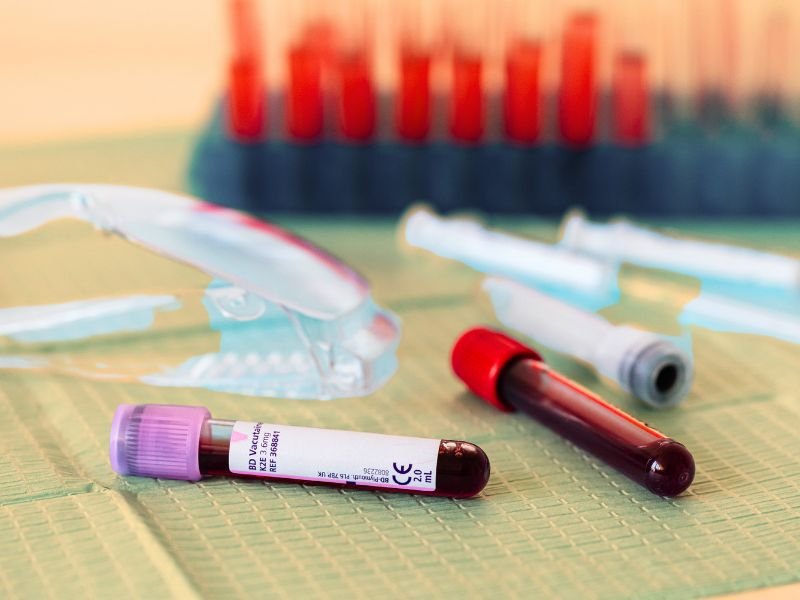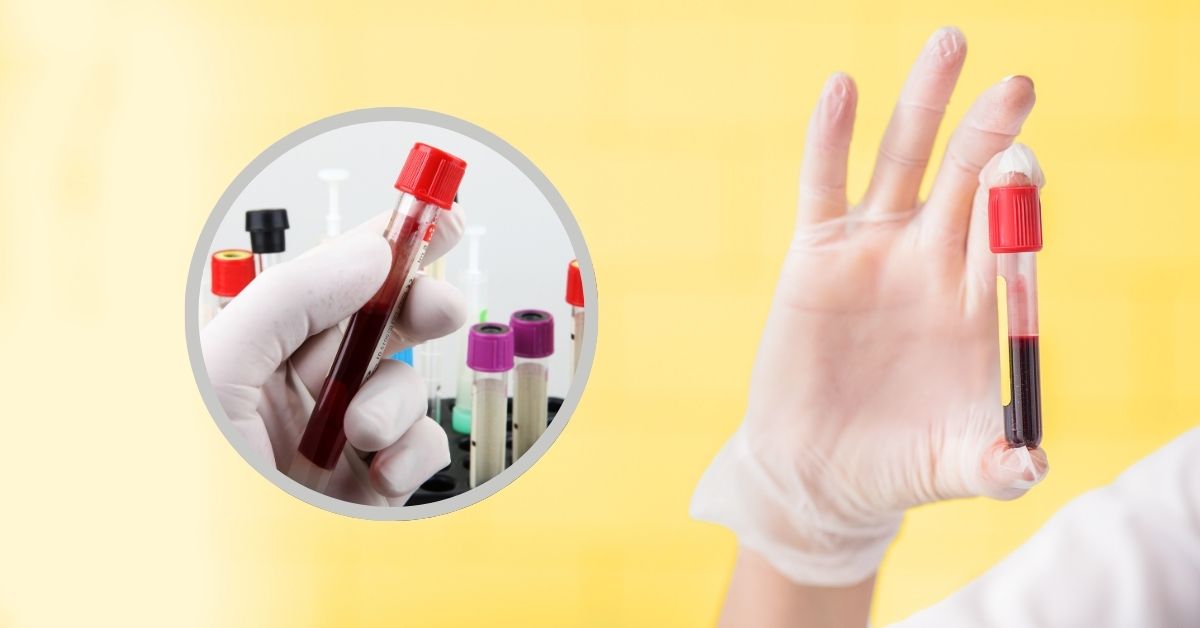Introduction to Celiac Disease Blood Tests
Celiac disease is a chronic autoimmune disorder in which the body’s immune system reacts to gluten, causing damage to the small intestine. Blood tests play a critical role in diagnosing this condition, as they detect specific antibodies produced by the immune system in response to gluten. These tests are a non-invasive, reliable starting point for individuals experiencing symptoms or those with a family history of celiac disease.
Beyond diagnosis, blood tests are also useful for monitoring the effectiveness of a gluten-free diet. Understanding how these tests work and their limitations is essential for anyone seeking to manage or diagnose celiac disease effectively.
How Blood Tests Detect Celiac Disease
Blood tests for celiac disease focus on identifying antibodies that the immune system produces when gluten is consumed. These antibodies are markers of the body’s autoimmune reaction and indicate that gluten is causing harm to the intestinal lining.
The primary antibodies tested include:
- Tissue Transglutaminase Antibodies (tTG-IgA): The most commonly used test, highly sensitive and specific for detecting celiac disease.
- Endomysial Antibodies (EMA): Often used as a confirmatory test, especially in cases where tTG-IgA results are borderline.
- Total IgA Levels: Helps ensure the body is producing enough IgA for accurate tTG-IgA and EMA results.
These antibodies are detected in individuals with active celiac disease who are consuming gluten, making the tests a reliable diagnostic tool when used correctly.
Types of Celiac Disease Blood Tests
Several blood tests are used to screen for celiac disease, each with a unique role in the diagnostic process.
- tTG-IgA (Tissue Transglutaminase IgA):
This is the most commonly performed test due to its high sensitivity and specificity. It detects the presence of tissue transglutaminase antibodies, which indicate an autoimmune response to gluten. - EMA (Endomysial Antibodies):
This test is often used as a follow-up to tTG-IgA testing. It has similar sensitivity but is more labor-intensive and less widely available. - Deamidated Gliadin Peptide (DGP) Antibodies:
Particularly useful for individuals with IgA deficiency or children under 2, as it detects a different set of antibodies triggered by gluten. - Total IgA Levels:
This test ensures that the body produces sufficient IgA. If total IgA levels are low, alternative tests like DGP-IgG are used.
These tests, when interpreted together, provide a comprehensive picture of the body’s response to gluten, aiding in an accurate diagnosis of celiac disease.
For detailed information on the various blood tests used to screen for celiac disease, including tTG-IgA, EMA, DGP antibodies, and total IgA levels, you can refer to the Celiac Disease Foundation’s overview: Celiac Disease Foundation
When Should You Consider Blood Tests for Celiac Disease
Blood tests for celiac disease are recommended for individuals experiencing symptoms that may be linked to the condition. These symptoms include digestive issues such as diarrhea, bloating, and abdominal pain, as well as non-digestive symptoms like fatigue, anemia, and unexplained weight loss.
You should also consider blood tests if:
- You have a first-degree relative (parent, sibling, or child) with celiac disease.
- You have another autoimmune condition, such as type 1 diabetes or thyroid disease, which increases the risk of celiac disease.
- Symptoms persist despite lifestyle or dietary changes.
Early testing can lead to a timely diagnosis, reducing the risk of long-term complications like malnutrition and osteoporosis.
How to Prepare for Celiac Disease Blood Tests

Proper preparation is crucial for accurate blood test results. The most important step is to maintain a gluten-inclusive diet before testing. Removing gluten prematurely can cause antibody levels to drop, leading to false-negative results.
Key preparation tips:
- Continue eating gluten-containing foods such as bread, pasta, and baked goods for at least 6-8 weeks before testing.
- Inform your healthcare provider about any medications or supplements you’re taking, as they may influence results.
Following these steps ensures that the tests detect the autoimmune response accurately, leading to a reliable diagnosis.
Accuracy of Celiac Disease Blood Tests
Celiac disease blood tests are highly accurate when conducted under proper conditions. The sensitivity (ability to detect the disease) and specificity (ability to avoid false positives) of these tests are as follows:
- tTG-IgA: Sensitivity of over 90% and specificity above 95%, making it the most reliable test.
- EMA: Similar accuracy to tTG-IgA but often used as a secondary confirmatory test.
- DGP-IgG: Useful for individuals with IgA deficiency, with slightly lower sensitivity compared to tTG-IgA.
While these tests are reliable, their accuracy depends on the individual consuming gluten during the testing period. False negatives can occur if gluten has been excluded from the diet, or in rare cases of seronegative celiac disease.
Limitations of Celiac Disease Blood Tests
Although blood tests are a vital tool for diagnosing celiac disease, they are not foolproof. Some limitations include:
- False Negatives: Occur in individuals with IgA deficiency or those already on a gluten-free diet.
- False Positives: Rare but possible, especially in individuals with other autoimmune conditions.
- Need for Confirmation: A positive blood test usually requires confirmation via a small intestinal biopsy to evaluate tissue damage.
Understanding these limitations is important, as it highlights the need for a comprehensive diagnostic approach that combines blood tests with other methods like genetic testing or biopsy.
Blood Tests vs. Biopsy: What’s the Difference?
Blood tests and biopsies are complementary tools in diagnosing celiac disease. While blood tests detect antibodies produced by the immune system in response to gluten, biopsies assess the physical damage to the small intestine caused by the condition.
- Blood Tests:
Non-invasive and widely used as the first step in screening for celiac disease. They are cost-effective and provide a quick indication of whether further testing is needed. - Biopsy:
Considered the gold standard for confirming a celiac disease diagnosis. During an endoscopy, a small tissue sample is taken from the small intestine to check for villous atrophy (flattening of the intestinal lining).
While blood tests are reliable for initial screening, a biopsy is often required for a definitive diagnosis, especially in borderline cases.
Are Blood Tests Reliable for Monitoring Gluten-Free Diet Compliance?

Blood tests are not only useful for diagnosing celiac disease but also for monitoring treatment. After starting a gluten-free diet, antibody levels (like tTG-IgA) should decrease over time, indicating reduced immune activity and healing of the intestine.
However, monitoring with blood tests has its limitations:
- Antibody levels can take months or even years to normalize, depending on how strictly the diet is followed.
- Some individuals with celiac disease may not produce antibodies consistently, making blood tests less effective for tracking compliance.
Regular follow-ups with a healthcare provider, including blood tests and symptom evaluation, help ensure the gluten-free diet is working effectively.
Cost of Celiac Disease Blood Tests
The cost of celiac disease blood tests varies depending on the location, healthcare provider, and insurance coverage. On average:
- A single tTG-IgA test costs between $50 and $200.
- Comprehensive panels, including EMA and DGP tests, may range from $150 to $400.
Many insurance plans cover the cost of these tests if ordered by a healthcare provider, especially when symptoms or a family history of celiac disease are present. For uninsured individuals, community health programs or online diagnostic services may offer more affordable options.
Recent Advancements in Blood Test Technology
Recent innovations in blood test technology are improving the accuracy and accessibility of diagnosing celiac disease. Researchers are developing advanced assays that:
- Detect additional biomarkers, making tests more sensitive and reliable.
- Require smaller blood samples, enabling quicker and less invasive testing.
- Identify celiac disease in individuals with atypical presentations, such as seronegative celiac disease.
These advancements are particularly promising for early detection and for populations where traditional tests may not perform as well, such as young children or those with IgA deficiency.
Conclusion: Importance of Blood Tests in Managing Celiac Disease
Celiac disease blood tests are an essential tool for diagnosing, monitoring, and managing this autoimmune condition. They provide a non-invasive way to detect gluten-triggered immune responses and help guide individuals toward effective treatment through a gluten-free diet.
While highly reliable, blood tests have limitations, and a comprehensive diagnostic approach—including biopsies and genetic testing—ensures the most accurate results. As research continues to improve diagnostic technologies, these tests will become even more accessible and precise, offering hope for earlier detection and better management of celiac disease.
For more information about celiac disease and gluten-free living, explore our comprehensive guide, Celiac Disease Basics: Understanding the Foundation of Gluten-Free Living.
FAQs
- What blood tests are used to diagnose celiac disease?
Common tests include tTG-IgA, EMA, and total IgA levels. - Can you have a negative blood test and still have celiac disease?
Yes, false negatives are possible, especially if you are on a gluten-free diet. - Do I need to eat gluten before taking a blood test for celiac disease?
Yes, consuming gluten is essential for accurate test results. - Are celiac disease blood tests painful?
The tests involve a simple blood draw, which is minimally invasive. - How long do celiac disease blood test results take?
Results typically take a few days to a week, depending on the lab.

Hi, I’m Philip John – a writer at Celiac Magazine with a passion for uncovering the truth behind what we eat and how it affects our health. I dive deep into food science, nutrition, and living well with celiac disease, all with one goal: to make complex topics easy to understand and actionable. Whether you’re newly diagnosed or just curious about gluten-free living, I’m here to help you navigate it all with clarity and confidence.

